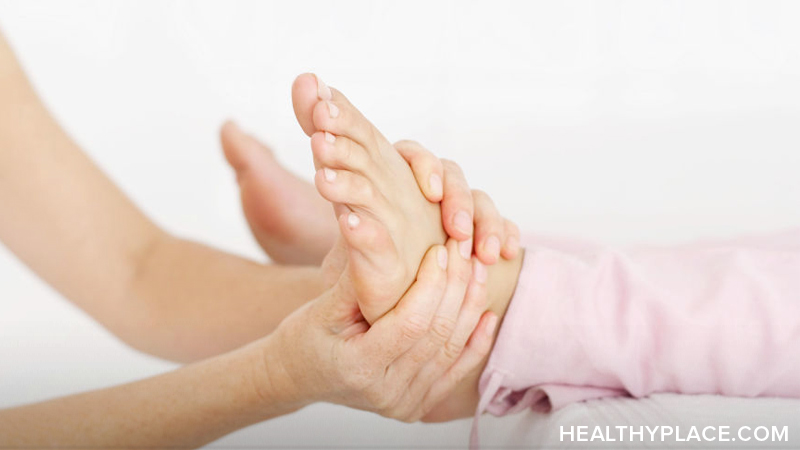Being Co-dependent: A Dance of Suffering, Shame, and Self-abuse
"The reason that we have not been Loving our neighbor as ourselves is because we have been doing it backwards. We were taught to judge and feel ashamed of ourselves. We were taught to hate ourselves for being human."
"If I am feeling like a "failure" and giving power to the "critical parent" voice within that is telling me that I am a failure - then I can get stuck in a very painful place where I am shaming myself for being me. In this dynamic I am being the victim of myself and also being my own perpetrator - and the next step is to rescue myself by using one of the old tools to go unconscious (food, alcohol, sex, etc.) Thus the disease has me running around in a squirrel cage of suffering and shame, a dance of pain, blame, and self-abuse."
Codependence: The Dance of Wounded Souls
Codependence is insidious because it is so pervasive. The core emotional belief that there is something wrong with who we are as beings affects all of the relationships in our life and keeps us from learning how to Truly Love. In a Codependent society value is assigned in comparison (richer than, prettier than, more spiritual than, healthier than, etc.) so that the only way to feel good about self is the judge and look down on others. Comparison serves the belief in separation which makes violence, homelessness, pollution, and billionaires possible. Love is about feeling connected in the scheme of things not separate.
Codependence is vicious because it causes us to hate and abuse ourselves. We were taught to judge and shame ourselves for being human. At the core of our relationship with ourselves is the feeling that we are somehow not worthy and not lovable.
My father was trained that he was supposed to be perfect and that anger was the only permissible male emotion. As a result, that little boy that made mistakes and got yelled at felt like he was flawed and unlovable.
continue story below
My mother told me how much she loved me, how important and valuable I was, and how I could be anything that I wanted to be. But my mother had no self-esteem and no boundaries so she emotionally incested me. I felt responsible for her emotional well-being and felt great shame that I couldn't protect her from father's raging or the pain of life. This was proof that I was so flawed that, though a woman might think I was lovable, eventually the truth of my unworthiness would be exposed by my inability to protect her and insure her happiness.
The church I was raised in taught me that I was born sinful and unworthy, and that I should be grateful and adoring because God loved me in spite of my unworthiness. And, even though God loved me, if I allowed my unworthiness to surface by acting on (or even thinking about) the shameful human weaknesses that I was born with - then God would be forced, with great sadness and reluctance, to cast me into hell to burn forever.
Is it any wonder that at my core I felt unworthy and unlovable? Is it any wonder that as an adult I got trapped in a continual cycle of shame, blame, and self-abuse?
The pain of being unworthy and shameful was so great that I had to learn ways to go unconscious and disconnect from my feelings. The ways in which I learned to protect myself from that pain and nurture myself when I was hurting so badly were with things like drugs and alcohol, food and cigarettes, relationships and work, obsession and rumination.
The way it works in practice is like this: I am feeling fat; I judge myself for being fat; I shame myself for being fat; I beat myself for being fat; then I am hurting so badly that I have to relieve some of the pain; so to nurture myself I eat a pizza; then I judge myself for eating the pizza, etc. etc.
To the disease, this is a functional cycle. The shame begets the self-abuse which begets the shame which serves the purpose of the disease which is to keep us separate so the we don't set ourselves up to fail by believing that we are worthy and lovable.
Obviously, this is a dysfunctional cycle if our purpose is to be happy and enjoy being alive. The way to stop this cycle is two-fold and simple in theory but extremely hard to implement on a moment-to-moment, day-to day basis in our lives. The first part has to do with removing the shame from our inner process. This is a complicated and multi-leveled process that involves changing the belief systems that are dictating our reactions to life (this include everything from positive affirmations to grief/emotional energy release work, to support groups, to meditation and prayer, to inner child work, etc.) so that we can change our relationship with ourselves at the core and start treating ourselves in healthier ways.
The second part is simpler and usually harder. It involves taking 'the action.' ('the action' refers to the specific behavior. We have to take action to do all of the things listed in the first part as well.) Changing the behavior that is giving us a reason for the shame. Just saying 'no' - or 'yes' if the behavior in question is something like not eating or isolating or not exercising. And even though it may sometime work in the short run to use shame and judgment to get ourselves to change a behavior, in the long term - in alignment with our goal of having a more Loving relationship with ourselves so that we can be happy - it is much more powerful to take that action in a Loving way.
This involves setting a boundary for the little child inside of us, who wants instant gratification and instant relief, out of the Loving adult in us who understands the concept of delayed gratification. (If I exercise every day I will feel much better in the long run.) True pride comes from action taken. It is false pride to feel good about ourselves in comparison because of looks, talent, intelligence or for being forced to become spiritual, healthy, or sober. Those are gifts. True pride is taking credit for the action we have taken to foster, nurture, and maintain those gifts.
The way to break the self-destructive cycle, to stop the dance of shame, suffering, and self-abuse, is to set Loving boundaries for ourselves in the moment of that desperate need for immediate gratification and to know that - though it is not shameful if we can't do it perfectly or all the time - we need to 'just do it.' We need to stand up for our True Self to our wounded self in order to Love ourselves.
next: The Codependency Recovery Process, Mental, Emotional, Spiritual
APA Reference
Staff, H.
(2008, November 12). Being Co-dependent: A Dance of Suffering, Shame, and Self-abuse, HealthyPlace. Retrieved
on 2025, December 25 from https://www.healthyplace.com/relationships/joy2meu/being-codependent


 Do you really want to shake off your depression? Don't answer too fast, and don't be too sure. It is quite common that people get enough benefits from their depressions so that they prefer remaining depressed--despite all its unpleasantness--to being undepressed. So they stay depressed.
Do you really want to shake off your depression? Don't answer too fast, and don't be too sure. It is quite common that people get enough benefits from their depressions so that they prefer remaining depressed--despite all its unpleasantness--to being undepressed. So they stay depressed.